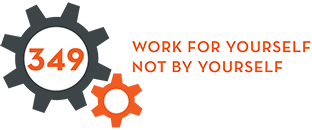[Editor’s Note: For our Startup Train this year, we’re asking all our passengers to decide their metric for attending the conference and share that. As we contemplated how to explain that, we figured who better than our friend Alistair Croll who just co-wrote Lean Analytics with Ben Yoskovitz]
boon·dog·gle (ˈbo͞onˌdägəl) Noun: Work or activity that is wasteful or pointless but gives the appearance of having value.
If you’re running a lemonade stand, your business model is pretty clear. You need to sell lemonade for more than it costs to make, often enough that it beats the opportunity cost of doing something else.
If you’re a disciplined, precocious kid, you probably recognize that your business model has some unknowns: how much your parents will charge you for ingredients; what kind of foot traffic you can expect; what price you can charge to maximize revenues. That kind of kid will grow up to be a founder.
So why is it that when we go to an event or socialize around business, we throw caution—and metrics—to the wind?
Too often I see companies exhibiting at conferences without knowing why they’re doing so. At best, they count “total leads”, which is basically foot traffic to their booth. Instead, they should be tracking qualified prospects; public sentiment; web traffic generated from things they mention on stage; and so on.
The definition of boondoggle might as well be the definition of vanity metrics: it gives the appearance of having value, but it’s actually pointless. If I have one piece of advice for companies thinking of participating in an event, it’s this: Have a point.
The third annual Startupfest happens in Montreal in roughly six weeks’ time. Last year, 1,300 founders, analysts, and investors descended upon the city with high hopes. They came to learn, to hustle, to recruit, to invest, and to connect. But few of them came with specific goals; and fewer still measured themselves against those goals afterwards.
The event costs around $375 for startups, or $525 on the Startup Train, which is cheap by any measure. But there’s also accommodations, and the distraction of not working on your dream for a few days. So you’d better know why you’re coming. Ben and I talk a lot about this in Lean Analytics: Know what metric matters to your business, draw a line in the sand, and try to cross it.
Your goals should be things like:
- I’ve done a customer development interview with ten prospects
- I’ve pitched five investors willing to take follow-on meetings
- I’ve identified three competitors
- I’ve uncovered six new customer acquisition strategies I can implement within a month of returning from the event
- I’ve found three contacts outside North America willing to help me promote my service there
Write your goal down. Better yet, get a big black marker and scrawl it on your arm, tweet about it, and make T-shirts explaining it to passersby. Enlist others in your quest.
This is incredibly uncomfortable stuff. Most founders have a vision of the world as it should be—and that means ignoring the world as it is. What’s more, we like to build things, because that’s what makes us feel good and clever. Your job at a conference is the opposite: to understand the world as it is, and to learn instead of building.
That’s how you turn a boondoggle into deliberate learning. Of course, if you have a blast along the way, that’s great too.
